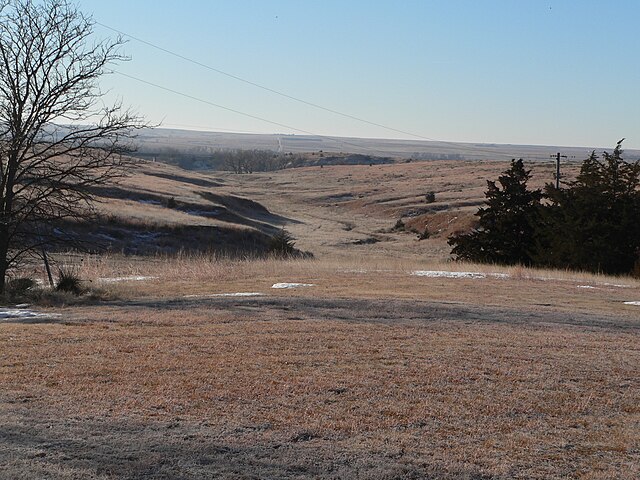The Massacre Canyon battle took place in Nebraska on August 5, 1873, near the Republican River. It was one of the last hostilities between the Pawnee and the Sioux and the last battle/massacre between Great Plains Indians in North America. The massacre occurred when a large Sioux war party of over 1,500 Oglala, Brulé, and Sihasapa warriors, led by Two Strike, Little Wound, and Spotted Tail attacked a band of Pawnee during their summer buffalo hunt. In the ensuing rout, many Pawnees were killed with estimates of casualties ranging widely from around 50 to over 150. The victims, who were mostly women and children, suffered mutilation and sexual assault.
View looking southwest from the Massacre Canyon monument
La-Roo-Chuck-A-La-Shar (Sun Chief) was a Pawnee chief who died fighting the Lakota at Massacre Canyon.
Massacre Canyon Monument.
The Pawnee are a Central Plains Indian tribe that historically lived in Nebraska and northern Kansas but today are based in Oklahoma. They are the federally recognized Pawnee Nation of Oklahoma, who are headquartered in Pawnee, Oklahoma. Their Pawnee language belongs to the Caddoan language family, and their name for themselves is Chatiks si chatiks or "Men of Men".
Kitkahaki George and his son Taloowayahwho, also known as William Pollock, in the mid 1890s.
Pawnee lodges near Genoa, Nebraska (1873)
Pawnee Indians migrating, by Alfred Jacob Miller
Ornamental hair comb by Bruce Caesar (Pawnee-Sac and Fox), 1984, of German silver, Oklahoma History Center







